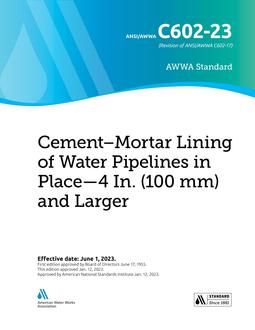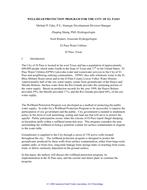-
-
Available Formats
- Options
- Availability
- Priced From ( in USD )
-
Available Formats
-
- Secure PDF 🔒
- Immediate download
- $30.00
- Add to Cart
-
- Printed Edition
- Ships in 1-2 business days
- $30.00
- Add to Cart
Customers Who Bought This Also Bought
-

AWWA C602-23
Priced From $140.00 -

AWWA QTC97007
Priced From $24.00 -

AWWA 51576
Priced From $24.00 -

AWWA ACE56269
Priced From $24.00
About This Item
Full Description
Conventional treatment is a good treatment barrier for some pathogens, but a poor one for others. This study was undertaken to compare the removal of several emerging pathogens and pathogen indicators, such as turbidity, in pilot-scale conventional treatment using coagulation, flocculation, sedimentation, and granular media filtration. The emerging pathogens included Cryptosporidium parvum oocysts, Encephalitozoan intestinalis spores, Escherichia coli O157:H7, and Aeromonas hydrophila. Bacteriophage MS2 and turbidity were used as pathogen indicators. This work revealed that A. hydrophila was removed more effectively than C. parvum, and E. intestinalis spores and E. coli O157:H7 were the least effectively removed. For the water tested in this study, results suggest that a change in filter effluent turbidity requirements from 0.5 to 0.3 ntu would not significantly improve the reliability of pathogen removal. However, by setting filter effluent turbidity goals below 0.2 ntu, significant improvements in microbiological quality could be obtained. These findings reinforce the need for more stringent turbidity standards.





